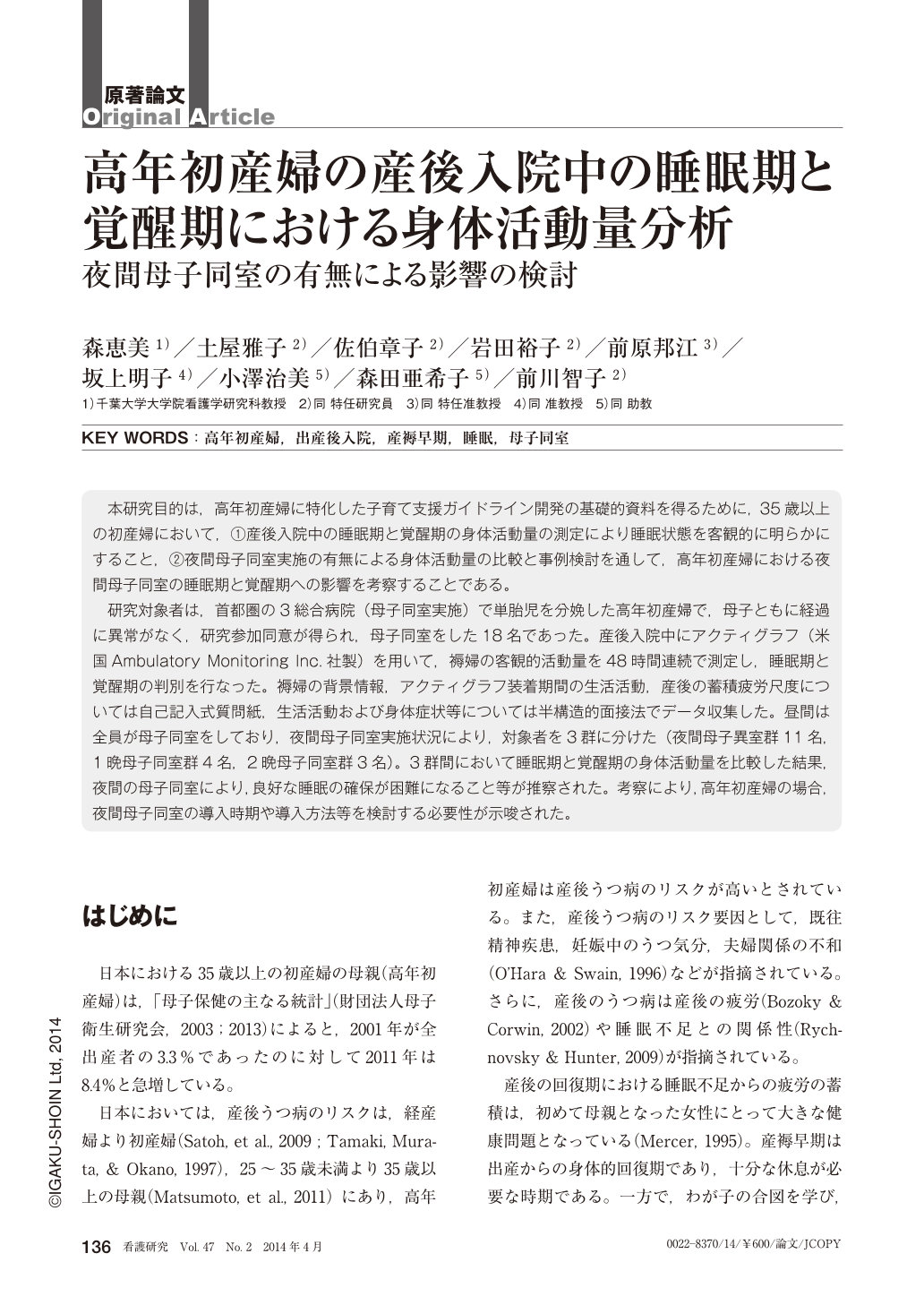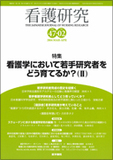Japanese
English
- 有料閲覧
- Abstract 文献概要
- 1ページ目 Look Inside
- 参考文献 Reference
- サイト内被引用 Cited by
本研究目的は,高年初産婦に特化した子育て支援ガイドライン開発の基礎的資料を得るために,35歳以上の初産婦において,①産後入院中の睡眠期と覚醒期の身体活動量の測定により睡眠状態を客観的に明らかにすること,②夜間母子同室実施の有無による身体活動量の比較と事例検討を通して,高年初産婦における夜間母子同室の睡眠期と覚醒期への影響を考察することである。
研究対象者は,首都圏の3総合病院(母子同室実施)で単胎児を分娩した高年初産婦で,母子ともに経過に異常がなく,研究参加同意が得られ,母子同室をした18名であった。産後入院中にアクティグラフ(米国Ambulatory Monitoring Inc. 社製)を用いて,褥婦の客観的活動量を48時間連続で測定し,睡眠期と覚醒期の判別を行なった。褥婦の背景情報,アクティグラフ装着期間の生活活動,産後の蓄積疲労尺度については自己記入式質問紙,生活活動および身体症状等については半構造的面接法でデータ収集した。昼間は全員が母子同室をしており,夜間母子同室実施状況により,対象者を3群に分けた(夜間母子異室群11名,1晩母子同室群4名,2晩母子同室群3名)。3群間において睡眠期と覚醒期の身体活動量を比較した結果,夜間の母子同室により,良好な睡眠の確保が困難になること等が推察された。考察により,高年初産婦の場合,夜間母子同室の導入時期や導入方法等を検討する必要性が示唆された。
The purpose of our project was to develop nursing guidelines for childrearing support in primiparous mothers aged over 35. To collect the evidence, in the present study we aimed to (1) explore sleep conditions using objectively measured amount of physical activities and (2) compare them across groups (and a case) divided by night rooming-in practice, during hospitalisation after childbirth.
We recruited potential participants from three general hospitals, where practiced rooming-in, in metropolitan regions. Inclusion criteria were first-time mothers aged over 35 who gave birth to a single baby ; mothers and their infants did not have major complications after birth ; mothers were able to do rooming-in ; and mothers gave us written consent.
Amount of physical activities, which objectively and consecutively (48 hours) measured by actigraphs during hospitalisation after childbirth, were analysed, and both sleep and wake periods were identified. Participants’ background information, daily activities during the actigraph assessment, and the degree of fatigue was asked using self-reported questionnaires. Additionally, daily activities and physical symptoms were asked by semi-structured interviews. A total of participants were 18 mothers (all participants practiced day time rooming-in). They were divided into three groups by night rooming-in practice: a non-night-rooming-in group (n=11), a one-night rooming-in group (n=4), and a two-night rooming-in group (n=3). As a result of comparisons of amount of physical activities across the groups, night rooming-in appeared to affect participants’ sleep conditions. We discussed timing and introductions of night rooming-in practice for first-time mothers aged over 35.

Copyright © 2014, Igaku-Shoin Ltd. All rights reserved.


